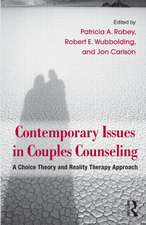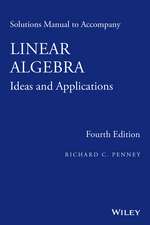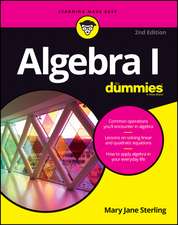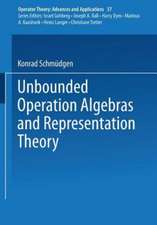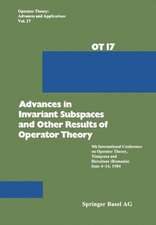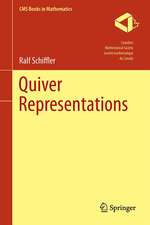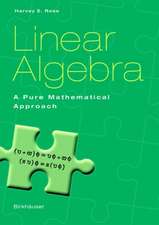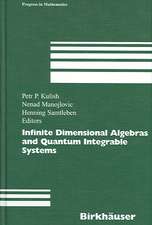Modules and Group Algebras: Lectures in Mathematics. ETH Zürich
Autor Jon F. Carlsonen Limba Engleză Paperback – 29 feb 1996
Din seria Lectures in Mathematics. ETH Zürich
-
 Preț: 319.43 lei
Preț: 319.43 lei -
 Preț: 453.98 lei
Preț: 453.98 lei -
 Preț: 482.56 lei
Preț: 482.56 lei -
 Preț: 348.77 lei
Preț: 348.77 lei -
 Preț: 379.30 lei
Preț: 379.30 lei -
 Preț: 383.93 lei
Preț: 383.93 lei -
 Preț: 378.71 lei
Preț: 378.71 lei - 15%
 Preț: 492.73 lei
Preț: 492.73 lei -
 Preț: 385.84 lei
Preț: 385.84 lei -
 Preț: 381.98 lei
Preț: 381.98 lei -
 Preț: 381.21 lei
Preț: 381.21 lei -
 Preț: 345.12 lei
Preț: 345.12 lei -
 Preț: 381.43 lei
Preț: 381.43 lei - 18%
 Preț: 735.84 lei
Preț: 735.84 lei - 15%
 Preț: 491.75 lei
Preț: 491.75 lei -
 Preț: 414.80 lei
Preț: 414.80 lei -
 Preț: 395.25 lei
Preț: 395.25 lei -
 Preț: 447.03 lei
Preț: 447.03 lei - 15%
 Preț: 493.37 lei
Preț: 493.37 lei -
 Preț: 380.45 lei
Preț: 380.45 lei -
 Preț: 350.24 lei
Preț: 350.24 lei -
 Preț: 347.15 lei
Preț: 347.15 lei -
 Preț: 382.36 lei
Preț: 382.36 lei -
 Preț: 383.71 lei
Preț: 383.71 lei -
 Preț: 447.62 lei
Preț: 447.62 lei -
 Preț: 381.98 lei
Preț: 381.98 lei - 18%
 Preț: 907.11 lei
Preț: 907.11 lei
Preț: 345.45 lei
Nou
Puncte Express: 518
Preț estimativ în valută:
66.11€ • 68.63$ • 55.12£
66.11€ • 68.63$ • 55.12£
Carte tipărită la comandă
Livrare economică 22 martie-05 aprilie
Preluare comenzi: 021 569.72.76
Specificații
ISBN-13: 9783764353896
ISBN-10: 3764353899
Pagini: 108
Ilustrații: XII, 92 p. 1 illus.
Dimensiuni: 178 x 254 x 6 mm
Greutate: 0.2 kg
Ediția:1996
Editura: Birkhäuser Basel
Colecția Birkhäuser
Seria Lectures in Mathematics. ETH Zürich
Locul publicării:Basel, Switzerland
ISBN-10: 3764353899
Pagini: 108
Ilustrații: XII, 92 p. 1 illus.
Dimensiuni: 178 x 254 x 6 mm
Greutate: 0.2 kg
Ediția:1996
Editura: Birkhäuser Basel
Colecția Birkhäuser
Seria Lectures in Mathematics. ETH Zürich
Locul publicării:Basel, Switzerland
Public țintă
ResearchCuprins
1 Augmentations, nilpotent ideals, and semisimplicity.- 2 Tensor products, Homs, and duality.- 3 Restriction and induction.- 4 Projective resolutions and cohomology.- 5 The stable category.- 6 Products in cohomology.- 7 Examples and diagrams.- 8 Relative projectivity.- 9 Relative projectivity and ideals in cohomology.- 10 Varieties and modules.- 11 Infinitely generated modules.- 12 Idempotent modules.- 13 Varieties and induced modules.- References.- List of symbols.






